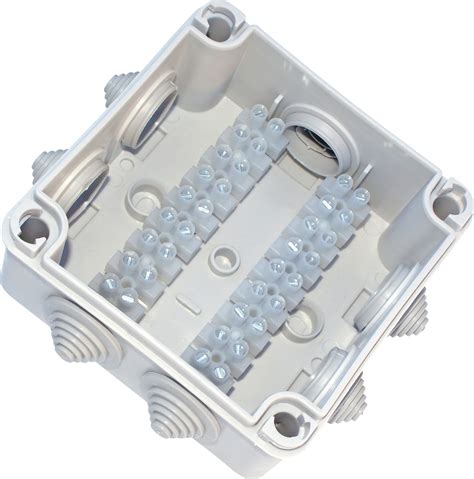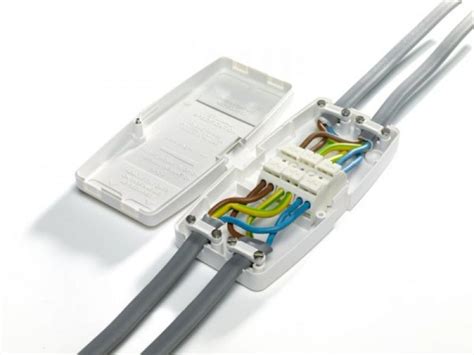electrical grey box use It’s important to know the different materials available for electrical boxes. You can decide between plastic or metal boxes, each with its own pros and cons. See more You can find the gauge to mm / inch conversion for sheet metal by the chart below. Or you can Download the Sheet Metal Gauge Size Chart PDF. (Click here) How many mm is 8 gauge? For different materials of steel, the same gauge will also correspond to different mm. What is 10 gauge in mm? What is 16 gauge thickness in mm?
0 · small electrical connector boxes
1 · maintenance free junction box toolstation
2 · gray plastic electrical box
3 · gray metal pvc for electricalwires
4 · 30 amp junction boxes
5 · 30 amp junction box toolstation
6 · 3 terminal electrical junction box
7 · 1 gang deep electrical box
Gauges are used to specify the thickness of a sheet metal. Gauges are neither standard nor metric and the values are independent of those measurement systems. A gauge conversion chart can be used to determine the actual thickness of sheet metal in .

Electrical boxes come in many styles, each designed for specific purposes. Understanding these differences will help you choose the right box for your project. See moreIt’s important to know the different materials available for electrical boxes. You can decide between plastic or metal boxes, each with its own pros and cons. See moreCertain applications require specialized electrical boxes for safety and proper installation. Depending on where you’re installing an electrical box, you’ll need to use some different . See more
Proper installation is important for the safe use of electrical boxes. Make sure the box is securely fastened to the framing or wall structure, and use the appropriate fasteners and methods listed by the manufacturer. Maintain proper box fill calculations to avoid . See moreSelecting the appropriate electrical box depends on several factors, including construction, wiring method, devices, location, and safety. See more Plastic boxes, technically called nonmetallic, are inexpensive and do not require grounding. Several different types of plastic are used for electrical boxes, and they may be . With the variety of different electrical boxes available at home centers, how do you know what to buy? Don’t worry, it’s not that complicated. We’ll whittle it down to about a dozen .
It’s a gray steel box with a hinged door, securely attached to the wall at around shoulder height. Inside the box, you’ll find two rows of switches. .
small electrical connector boxes
Ask This Old House master electrician Heath Eastman explains the uses and purposes of different types of electrical boxes [https://amzn.to/2tfriLq].SUBSCRIBE. Blue electrical boxes are typically made of plastic and are commonly used for indoor electrical installations, while gray electrical boxes are usually made of metal and are suitable . Color: Blue electrical boxes are typically associated with residential applications, while gray boxes are more commonly used in commercial and industrial settings. Amperage: . Electrical boxes encase wire connections to protect them from short circuits. They are vital for fire safety and are used for receptacles, ceiling fans, outside outlets, and more. Unless the device is one of the few that .
The choice between blue and gray electrical boxes depends on the type of wiring, the application, and local electrical codes. While color might seem like a minor consideration, it can significantly impact functionality, safety, and .
maintenance free junction box toolstation
There is a huge selection of electrical boxes, varying by size, shape, mounting device, and composition. One of the first distinctions to note is that of new work boxes and remodel or cut-in boxes. Choosing the Right Electrical Box for Your Project. Selecting the appropriate electrical box depends on several factors, including construction, wiring method, devices, location, and safety. Type of Construction. Your project’s construction type influences the choice of .
Plastic boxes, technically called nonmetallic, are inexpensive and do not require grounding. Several different types of plastic are used for electrical boxes, and they may be blue, black, grey, or beige in color. Many come with preattached nails for quick fastening to .
With the variety of different electrical boxes available at home centers, how do you know what to buy? Don’t worry, it’s not that complicated. We’ll whittle it down to about a dozen boxes to cover almost every situation. It’s a gray steel box with a hinged door, securely attached to the wall at around shoulder height. Inside the box, you’ll find two rows of switches. These are the circuit breakers you can toggle on and off to control the electricity you use in different parts of your house.
Ask This Old House master electrician Heath Eastman explains the uses and purposes of different types of electrical boxes [https://amzn.to/2tfriLq].SUBSCRIBE. Blue electrical boxes are typically made of plastic and are commonly used for indoor electrical installations, while gray electrical boxes are usually made of metal and are suitable for outdoor applications due to their durability and weather resistance. Color: Blue electrical boxes are typically associated with residential applications, while gray boxes are more commonly used in commercial and industrial settings. Amperage: Blue boxes are typically used for 15-ampere circuits, while .
are boxes distributed systems
Electrical boxes encase wire connections to protect them from short circuits. They are vital for fire safety and are used for receptacles, ceiling fans, outside outlets, and more. Unless the device is one of the few that contains its own wires, it likely will need an electrical box. The choice between blue and gray electrical boxes depends on the type of wiring, the application, and local electrical codes. While color might seem like a minor consideration, it can significantly impact functionality, safety, and the overall appearance of .
There is a huge selection of electrical boxes, varying by size, shape, mounting device, and composition. One of the first distinctions to note is that of new work boxes and remodel or cut-in boxes. Choosing the Right Electrical Box for Your Project. Selecting the appropriate electrical box depends on several factors, including construction, wiring method, devices, location, and safety. Type of Construction. Your project’s construction type influences the choice of . Plastic boxes, technically called nonmetallic, are inexpensive and do not require grounding. Several different types of plastic are used for electrical boxes, and they may be blue, black, grey, or beige in color. Many come with preattached nails for quick fastening to .
With the variety of different electrical boxes available at home centers, how do you know what to buy? Don’t worry, it’s not that complicated. We’ll whittle it down to about a dozen boxes to cover almost every situation. It’s a gray steel box with a hinged door, securely attached to the wall at around shoulder height. Inside the box, you’ll find two rows of switches. These are the circuit breakers you can toggle on and off to control the electricity you use in different parts of your house.Ask This Old House master electrician Heath Eastman explains the uses and purposes of different types of electrical boxes [https://amzn.to/2tfriLq].SUBSCRIBE. Blue electrical boxes are typically made of plastic and are commonly used for indoor electrical installations, while gray electrical boxes are usually made of metal and are suitable for outdoor applications due to their durability and weather resistance.
arduino cnc foam cutting machine
Color: Blue electrical boxes are typically associated with residential applications, while gray boxes are more commonly used in commercial and industrial settings. Amperage: Blue boxes are typically used for 15-ampere circuits, while . Electrical boxes encase wire connections to protect them from short circuits. They are vital for fire safety and are used for receptacles, ceiling fans, outside outlets, and more. Unless the device is one of the few that contains its own wires, it likely will need an electrical box. The choice between blue and gray electrical boxes depends on the type of wiring, the application, and local electrical codes. While color might seem like a minor consideration, it can significantly impact functionality, safety, and the overall appearance of .

gray plastic electrical box
16 gauge would be considered slightly thicker than most stock panels, but perhaps "stock-ish" for earlier sheet metal from the factories. Don't know if EB's used that thickness on any panels or not. 18 gauge seems to be the thickness of choice for much of the aftermarket stuff. I have heard that 18 was stock.
electrical grey box use|3 terminal electrical junction box